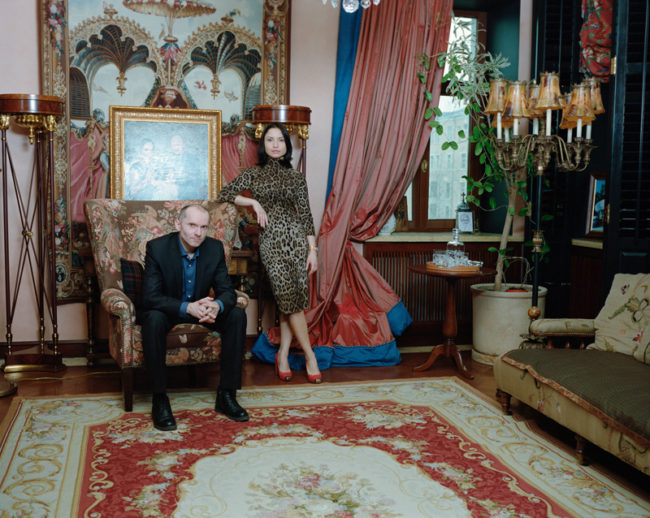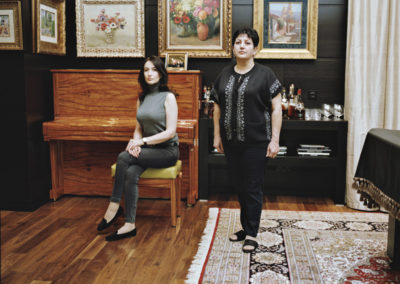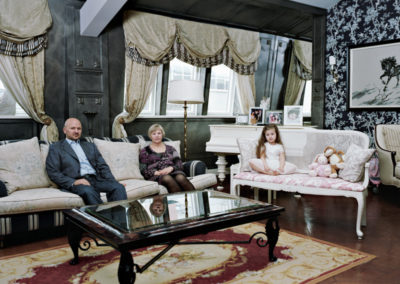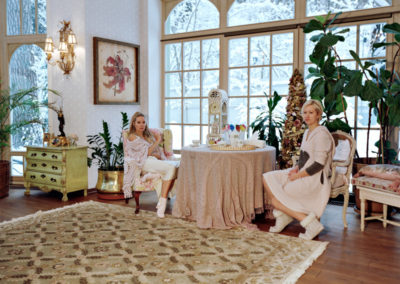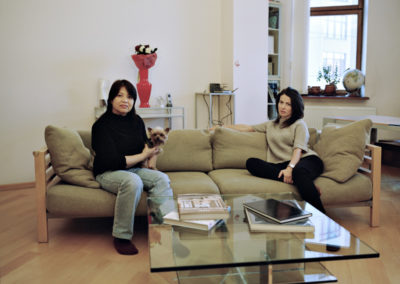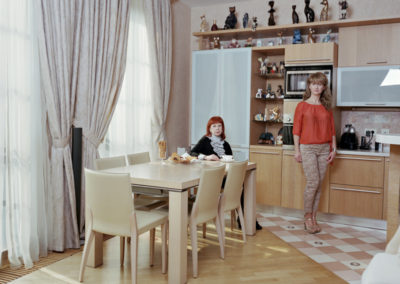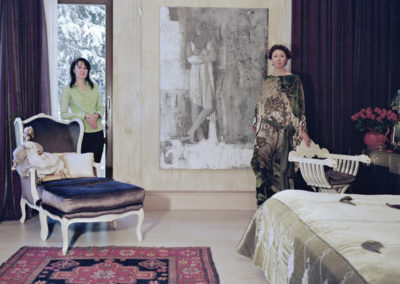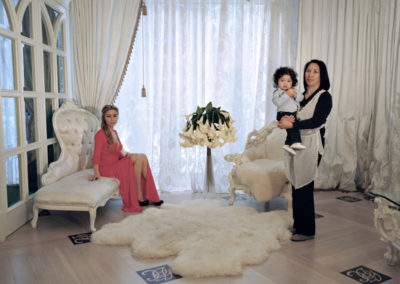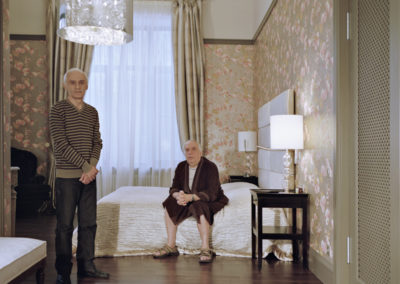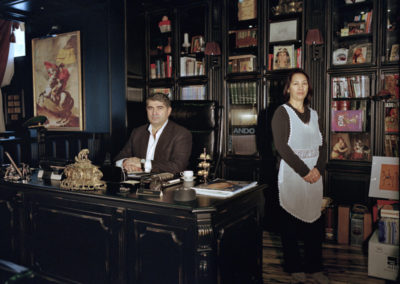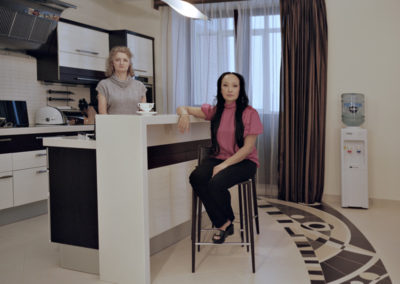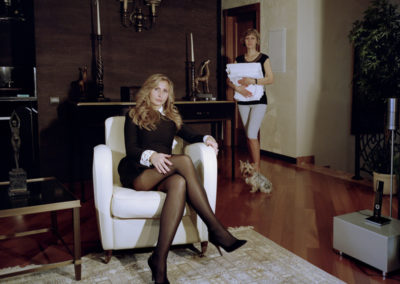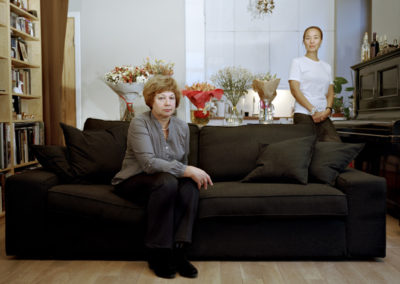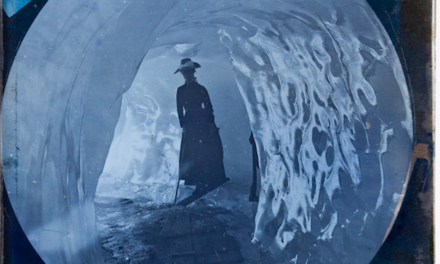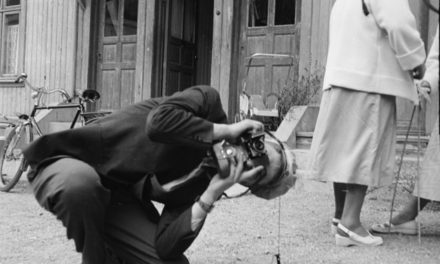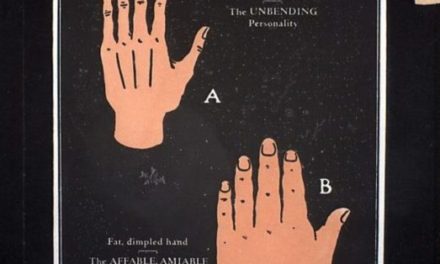Masters and Servants
by Lilia Li-Mi-Yan
Turkmen photographer Lilia Li-Mi-Yan’s staged portrait series, “Masters and Servants,” takes us inside the opulent homes of wealthy Russians where we can glimpse the lives of those who live and work within their walls. The photographer, however, is not an outsider who has been given exclusive access—she belongs to this circle of wealthy men and women, friends and acquaintances who agreed to be photographed alongside their domestic workers.
The series not only grants us entry into this otherwise private world, but it also exposes the complex social hierarchy between Russia’s ultra-rich and those that serve them. The so-called “servants” are often people with higher education degrees or former professionals who, unable to find a stable footing in Russia’s complicated economy, turn to service jobs in the homes of the country’s growing nouveau riche class.
Careful composition and the subjects’ impenetrable gaze ask us to confront our notions of “master” and “servant” while gauging their relationship in a space that functions as a workplace for one and a home for the other. But, it’s not always easy to tell who is master and who is servant.
What prompted you to create this series?
You know, very often you don’t notice what’s right in front of you. I had some classmates over to my house and they brought my attention to the topic after seeing the domestic staff.
I worked on this series for a year. It was my thesis project for the Rodchenko Moscow School of Photography and Multimedia. In 2014, I was a finalist for the Kandinsky Prize for this project.
The careful arrangement and composition of the people in the photos make it difficult to tell who is the “servant” and who is the “master.” Was that your intention?
For me, it was very important that nothing distracted the viewer from the subjects. Unnecessary elements in the frame could have taken the project in a different direction. Any visual ambiguity of “master” and “servant” roles actually happened without any effort on my part. The domestic staff, especially those with college degrees, did not feel they were of lower status and voluntarily chose their places in front of the camera. However, if you look carefully, you can also see the opposite happen.
In a brief introduction to the series, you note that while servants are indispensable members of the household, they must also become “invisible.” Why is invisibility so important in this profession?
It’s important not to intrude in the personal space of the masters, and to allow them to feel comfortable in their own homes.
You include yourself in the series (seen here). However, there is a marked difference in the arrangement of your self-portrait from that of the others: it’s an exterior shot, in front of your home, the gates are open, and both “master” and “servant” are furthest from the frame. What was your thinking behind the staging of this portrait?
This is my personal perception. I wanted to hide and at the same time show respect for my household staff. Each of us has our own view of the world.
Some of the wealthy people depicted are your acquaintances. What advantages or disadvantages were you given as an insider?
Overall, there was a positive and accommodating attitude towards the project. By agreeing to participate, the subjects patiently posed for the camera, allowed and helped me to move furniture around, willingly answered my questions, and always offered some refreshments.
A disadvantage was the frequent rescheduling of sessions because of the subjects’ tight schedules. However, the biggest difficulty came with the publication of the project. It seemed that the participants did not anticipate the wide response and discussion on the internet.
The project is pretty intimate; I shot the subjects at their ease, in the comfort of their homes. But, overnight the online discussion turned to analyzing the national identities of the participants and the social class inequality of household staff. Some of the participants even asked me to remove them from the series.
Many of the household staff have former professional backgrounds on a par with their employers. They’ve worked as engineers, teachers, and doctors. One woman was an energy company manager. How does their previous status inform and, perhaps, complicate the relationship with their current employers?
I think that it’s easier for a person with an education to adopt a new trade. Once they make the decision to enter this profession they are aware of their social status. Those that are ashamed or uncomfortable with this line of work don’t enter this profession. For example, my housekeeper has two university degrees, the second of which she completed while working for me. She currently works as a teacher at a daycare and as my housekeeper. She plans to transition to work with children full-time. I don’t think working with kids is easier than being a housekeeper for a family, but for her, it seems it’s a matter of social status.
Are there any writers that have influenced or inspired your work?
I am always inspired by literature. The way I choose books varies. I love reading friends’ recommendations because I can then discuss the books with them. Sometimes, a quote on the internet grabs me and I’ll search for its source.
When I like a particular author, I read his/her work to the point of exhaustion. And only after I am emotionally satisfied can I move on to another author.
As far as Russian authors are concerned, it’s the classics; Vladimir Nabokov, Fyodor Dostoevsky, Nikolai Gogol.
I was also very much influenced by Jean-Paul Sartre, Charles Bukowski, Henry Miller, and the Marquis de Sade. I’ve also published a small, intimate book, with a very small circulation, which was inspired by the work of these authors.
Lilia Li-Mi-Yan was born in Ashgabat, Turkmenistan. She has been living and working in Moscow since 1991. First trained in choreography and ballet, she entered the Rodchenko School of Photography and Multimedia in 2010 where she specialized in Documentary Photography. In 2014, her series “Masters and Servants” was a finalist for the Kandinsky Prize in the category “Project of the Year.” Her work has been exhibited at the Rodchenko Moscow School of Photography and Multimedia, Artplay, MAMM, MOMMA Moscow Biennale, the Loft Project Etagi in Saint Petersburg, The Garage Center for Contemporary Culture, and the Multimedia Art Museum in Moscow. Corporeality is central to her work. To see more please visit: seen here

